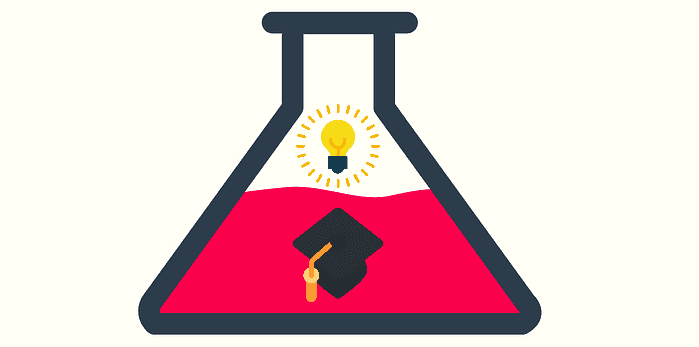After quietly piling up for more than a century, memory research recently went nuts.
There’s now a buffet of pop-science books, online courses, landmark studies, and good old-fashioned websites awaiting anyone who wants to learn about learning.
A lot of these take a while. Many people, understandably, are not up for the scenic route.
I am one of the weirdos who is. And today, just for you, I am committing the heinous crime of boiling down the main takeaways into four words:
- Retrieve
- Rest
- Rearrange
- Repeat
Retrieving is golden
A master of retrieval practice at work.
Retrieval practice (also known as active recall or generation) is the undisputed champion of learning strategies. It’s when you try to remember as much as you can “from scratch,” relying as little as possible on cues and hints.
It’s simple but rarely easy. That’s the point. A few ways of using it:
- Self-testing. This one has the most research behind it.Study something, start a timer, and recall, recall, recall. Learning a language? Talk to a native speaker. Learning math? Take some practice quizzes.
- Pre-testing. Test yourself before you even know any material, and your brain will automatically look for the important stuff as you study.
- Elaboration and self-explanation. Pretend you’re teaching someone else why something is true, how it works, and what it means in context.
Invest in rest
A master of rest at work.
Sleep is where the magic happens. Literally. We know sleep cements memories, but a lot of the details are still being worked out.
What we know for sure is that not sleeping enough is catastrophic for learning, and that “study siestas” are your best friend.
And don’t just sleep. Relax. Let your mind wander. Work on other stuff. Go for walks. Your brain works on problems even when you’re not thinking about them. You gotta let it do its thing.
Rearranging: it’s game-changing
A master of interleaving at work.
Interleaving, the opposite of studying one thing at a time, is awesome.
Covering multiple topics per study session has massive advantages over keeping each topic to itself. A couple of possible reasons:
- It makes you better at pulling the knowledge from long-term memory. If you’re interleaving, then at any given moment, you’re less likely to be studying whatever you were studying a little while ago. Time for long-term memory to shine.
- It helps you understand the central ideas that make each topic unique. On math tests, for example, you need to know the “boundaries” between concepts. When do I use this one and not that one?
Worked examples help for a lot of the same reasons. In fact, when you’re just starting to learn about something, watching people use it in new ways or solve new problems with it can be more effective than retrieval practice.
Then there are faded examples. Piece by piece, you “fade out” parts of the worked examples that are being done for you, and start getting involved.
Last but not least…
Repeat. I repeat: Repeat.
You get the idea.
Retrieval practice and interleaving won’t work any wonders without deliberate practice. We may not have needed any research to find this one out. People did it anyway.
The distance between study sessions also matters; the spacing effect is the memory boost that comes with spreading out your studying over time.
How much time? A good rule of thumb: as much as you can get away with.
Desirable difficulty is actually a real bit of science jargon. The longer you can wait after a study session and still retrieve things from it, the more those things will stick after you do retrieve them again.
The hardest part isn’t knowing you should do this. It’s doing it. And here, I think, is where you’ll find the lowest-hanging fruit in edtech.
Go on…
So far, this post has only covered the “how” of learning. For many, the “what” and the “why” are much bigger deals.
If what you’re learning neither motivates you nor helps you reach your goals, how efficiently you learn it is beside the point.
So, sure, edtech helps with the “how.” Fancy tools and immersive learning environments are great. Big data can help students see which details they need to work on and when. There are even apps that prevent grogginess by tracking sleep cycles and telling you when to wake up.
But enabling and enhancing the learning strategies above can’t be the whole picture. There’s also:
- Encouraging users to use them**.** Gamification, as buzzwords go, gets a bad rap. People love points and levels and quests. Why not use them to turn deliberate practice from a chore into a journey?
- Enlightening users about them**.** The way you design your learning service can give users a way better grasp of what makes learning happen. At Yup, for example, a lot of what we build is aimed at helping our tutors ask better guiding questions (bite-sized retrieval practice, basically) and use better worked examples. The more often our users return, the more they see why.



